5 Days in Cuba visiting Havana and Varadero
Looking for a relatively warm modern city to visit but still be forced to go off the grid? Visit Cuba. We spent 5 days / 4 nights visiting Havana and Varadero and had an amazing time. Read on to have all your burning Cuba questions answered including transportation, visas, water, and money; a map of where to go, and learn about what we did on our trip… plus more including Havana history, our costs, what we would do differently, and some tips!
WHY GO TO CUBA?
The city is full of charm, character, history and an authentic vibrancy. The people are warm, welcoming and typically helpful despite the language barrier. Food/lodging/excursions are relatively inexpensive so you can do a lot on a little budget especially if you get a good deal on flights. Are you a last minute person? The city is too, they’ll help you plan things if you like to figure it out as you go. It is a tropical climate so you’ll fill up on Vitamin D while you are there, too! From outdoorsy activities to beach lounging to club hopping to dancing to music and more — it has a little bit for everyone all tucked away 90 miles from the southern most point of the US.
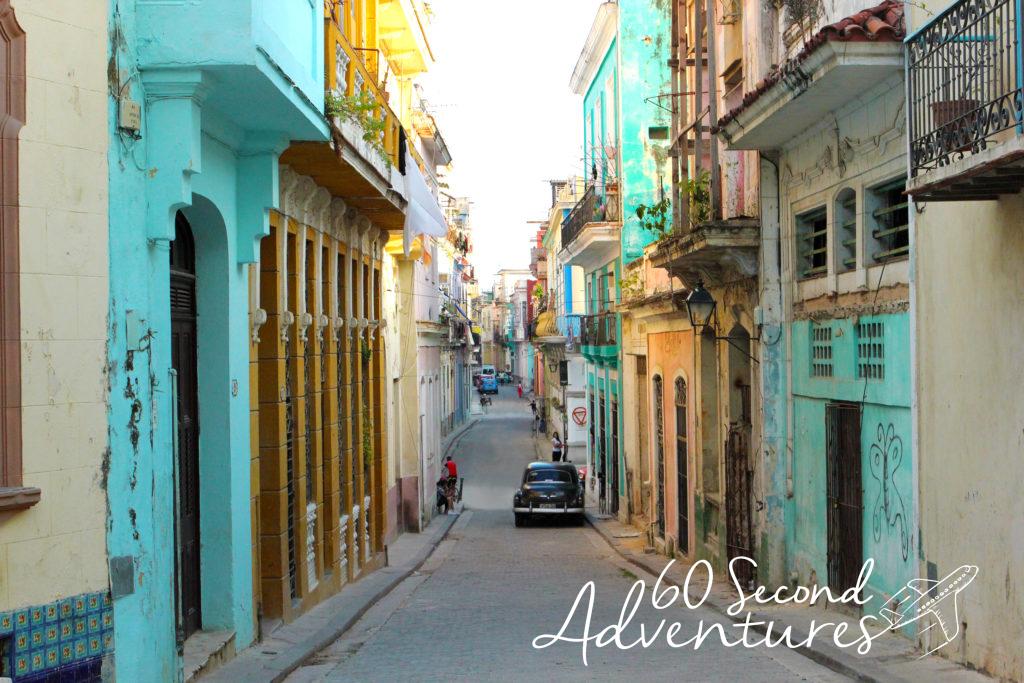
Cuba Score Card: 6.25/10
- Transportation: 6/10 (Streets aren’t well labeled and aren’t always well kept, public transit is minimal but there are buses you can book in advance between cities, cabs are available and negotiable, car rentals are expensive and hard to come by)
- Price: 8/10 (lodging/food/experiences were inexpensive compared to the US)
- Safety: 9/10 (we felt safe just about everywhere along the way and didn’t see any signs of crime/drugs/prostitution)
- Food: 5/10 (They had amazing food but also a lot of places that may be serving things that can make you sick due to food safety or contaminated water. We kept to fried foods to ensure everything was well cooked)
- Culture: 7/10 (a lot of cultural festivals and experiences especially with dancing and music throughout the city)
- History: 7/10 (a lot of historical references and options throughout the city)
- Excitement: 5/10 (It wasn’t extremely exciting or thrilling)
- Awe Inspiring: 7/10 (there were a lot of beautiful authentic views/experiences/places)
- Technology Equipped: 1/10 (limited wifi service, limited technology integration (most didn’t accept US or foreign credit cards as well as ability to use ATMs)
- Female Friendly: 7/10 (It’s a safe and friendly city for women with the occasional catcall)
- Solo Travel Recommended: 9/10 (everyone is friendly and there are a lot of solo outdoor activities to take part in or just general exploring. As long as you can cover the cost of a casa yourself, you’ll have a great time traveling here solo)
- Language Barrier: 4/10 (even in the touristy areas the English speakers were limited and hard to communicate with (but they always tried as did we))
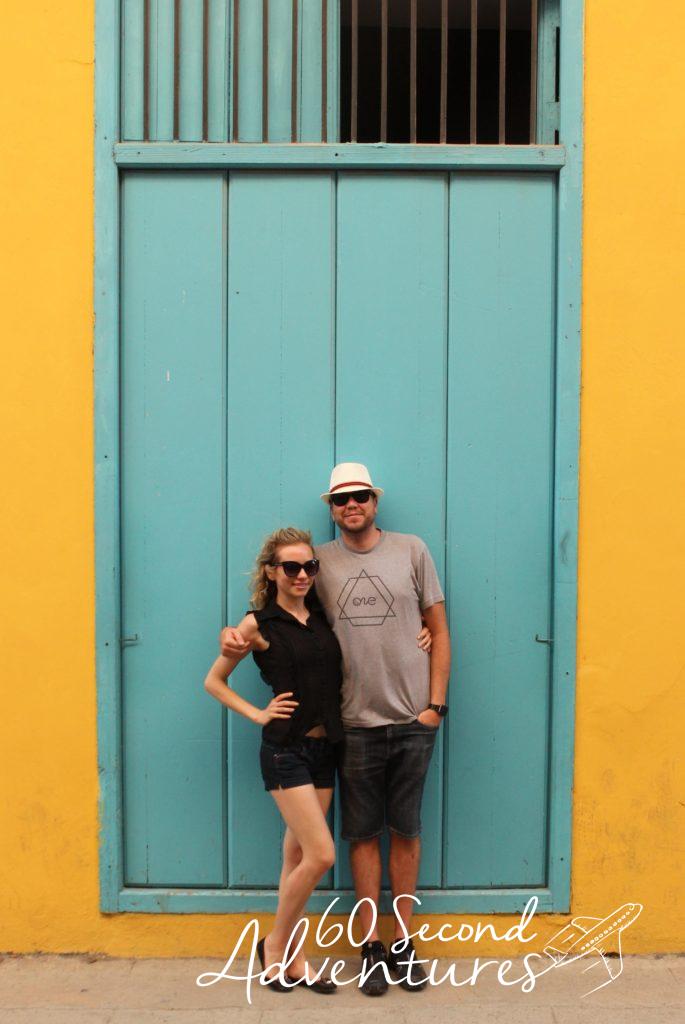
OVERVIEW
To be honest, Havana is a bit smelly and dirty (but not buggy or cockroach infested dirty — at least that we could tell). Garbage dumpsters line the tiny neighborhood streets and are pressed up against buildings wearing decades old tattered murals. The city as a whole is crumbling as not much has been done in terms of infrastructure maintenance since their heydays in the late 1950’s or in some cases even before that. It gives it charm. The colors, though, are still there. The faded blues, greens, yellows, reds line the streets in mostly modest yet tall two to four story buildings. Vendors are trying to sell you any and everything in broken English as you walk the streets, they are true hustlers. At night people gather and talk to one another in their homes filled with old fashion furniture, electronics and only the most basic amenities. Although not lavish, their simple casas are flowing with so much life and love. The streets fill with people sitting out on their stoops watching passersby and children making up ball games. Music oozes into the air as you saunter by bars and restaurants, you can almost see the notes floating away as everyone is spilling over to the alleys dancing to the Cuban beats. Everyone is wearing a smile and will help you get to or do what you want, they are sincere. The cars are old and slow, it suits the size of the streets and the way of life. No one needs to be anywhere yet the locals are so helpful and resourceful, always trying to get ahead, so time wanders through the day in the most magical way possible.
It was strange to come from a place so connected where you can’t even walk down the street without seeing cellphones glued to fingers tapping away. We utilize a device to answer our every burning question and capture time permanently like it’s our job. The Cuban locals, however, and because of a lack of connectivity the tourists as well, are talking to one another without a cellphone in sight. We were forced to meet people, engage with spoken word (or Spanglish gestures), stop and become resourceful ourselves by asking locals for recommendations, directions or even to figure out what street we were on.
Havana reminded me of everything I loved about my Dad — the old school way of life that has been somewhat long forgotten: cool cars, dancing, music, laughter and real connections centered around authentic experiences with those you care about. A place where doors can be kept open, a knock and a hola yields someone greeting you, and you can trust your neighbor. As technology has crept in spoken words were replaced with text message emojis and self-worth with a handful of apps telling us our value in likes and comments. It was nice to escape back in time and gives a new appreciation for the technological capabilities we do have.
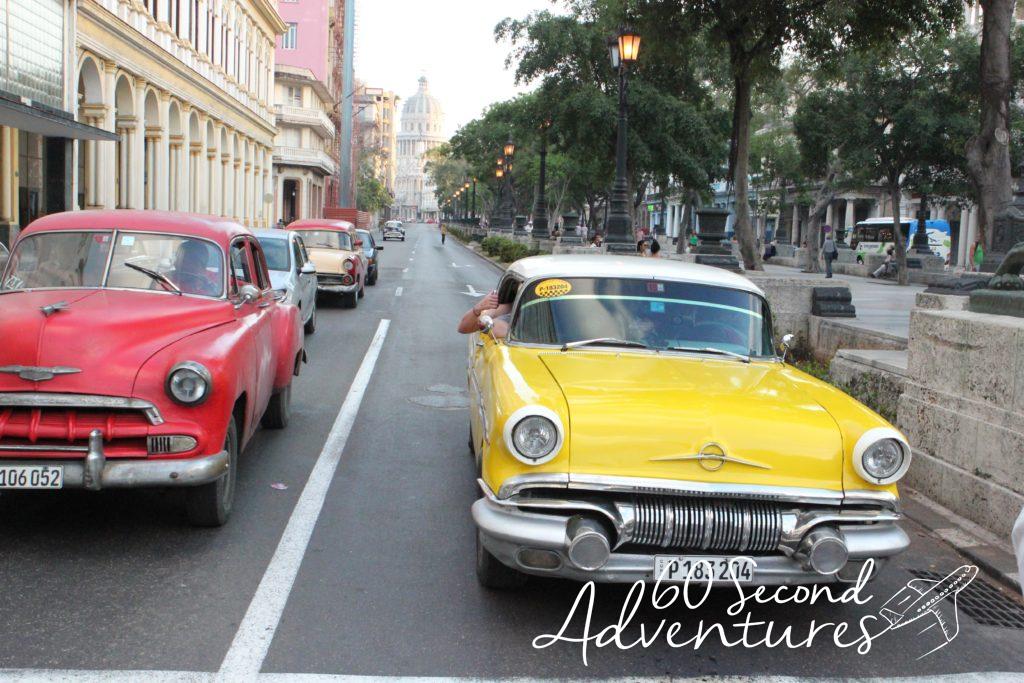
BASICS
Official Name: Republic of Cuba
Capital: Havana
Timezone: UTC+4 or +5
Currency: CUC (Convertable Cuban Peso — about 1 USD / .95 CUC due to exchange rate) or CUP Cuban Peso
Flag:
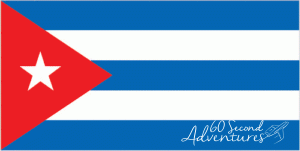
VISAS, HEALTH INSURANCE & PAPERWORK
Previously, no one was allowed to travel to Cuba from the United States (at least US airports weren’t allowed to have flights to Cuba). This all boils down the to the Invasion of the Bay of Pigs, Cuban Missile Crisis and US Embargo (read more about it in the history section below). However, in former president Obama’s last term, he opened up travel with Cuba under the condition it was for a list of various (non tourist) reasons. Currently, as of March 2017, US Citizens are still not allowed to visit Cuba as a tourist. They are, however, allowed to visit for one of these reasons: family visit, official US government business, journalistic activity, professional research/meetings, educational activities, religious activities, public performances/clinics/workshops/competitions/exhibitions, private foundation research or educational institutes, export/import/transmission of information, and certain authorized export transactions. Seeing as as we document our trip, we felt our travel fell under the journalistic reason.
We flew United Airlines and had friends fly JetBlue as well as Southwest Airlines. All three provided all the Visas prior to take off at the airport. United cost an extra $75, JetBlue cost $50 and Southwest was around $40 (as of March 2017). All these costs included the mandatory non-US health insurance (as required by Cuba). If you are unsure what is going on with your airline, I would call ahead of time or at the very least arrive at the airport early (as we had to go to a separate line to complete the Visa paperwork and pay the fee upon arrival). There we were given a visa and although we were traveling for journalistic reasons, we were provided with a visa that read ‘Tourista.’
Once in the air we had to fill out several additional forms. On one form we had to list our purpose of travel where we put journalist activity (as we were documenting our trip). No one at the Havana (HAV), Varadero (VAR), Newark (EWR) or Fort Lauderdale (FLL) airports asked us any questions about our reason for going, proof of journalist activity or regarding non-US health insurance compliance. Some of these documents we completed on the plane were taken when we went through customs upon entering Cuba, some when we left Cuba, some we still have (they were never collected).
RECENT INFLUX IN TRAVELERS TO CUBA
Our experience not only showed us amazing sights, but taught us about the evolution of Cuban society and culture over the past few decades. More interesting is the current transformation taking place as a result of the recent allowance in US travel to Cuba. Just over the past year, it’s caused a major influx in visitors and the city is having a hard time keeping up! The required food and lodging alone to fulfill tourists are creating a bit of scarcity for locals. On the flip side, this current shortage will create more wealth for locals in the long run. I anticipate more locals starting to find opportunities to make money off the tourist influx by catering to their needs and adjusting their professions to provide more where there is currently a shortage and get paid much better because of it.
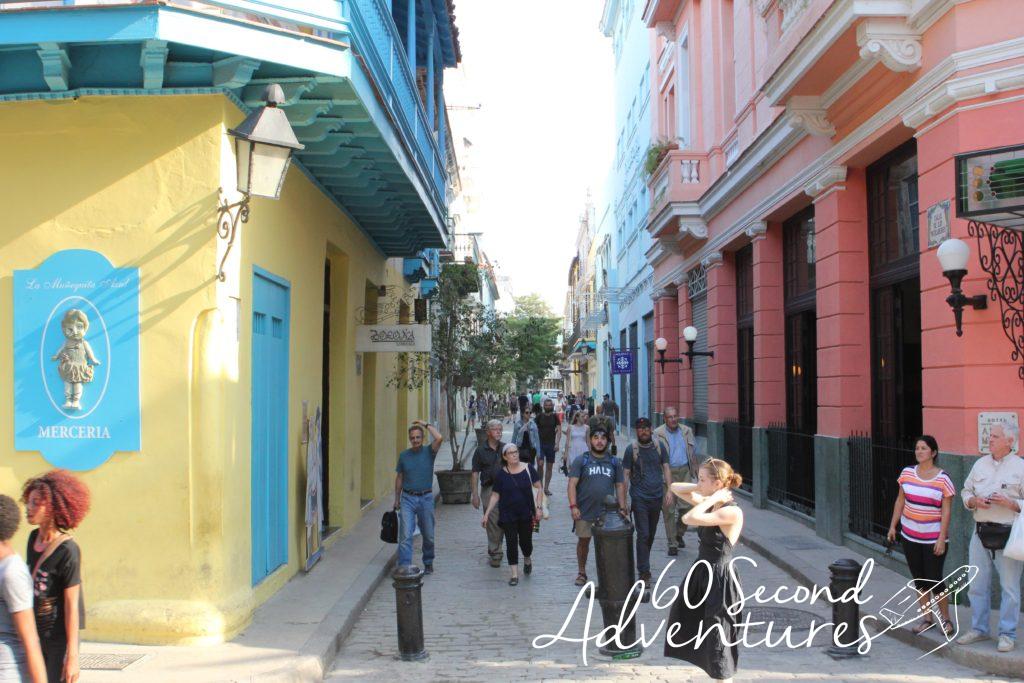
EVERYTHING IS NEGOTIABLE
Almost everything in Cuba is negotiable, so get your game face on. Cabs, food from vendors, trinkets — even if a price is listed, you can negotiate. Often times we would walk away after giving a price ‘too low’ and the vendor would come back saying they would take it. We loved getting a super cheap fare from these little motorized style coach cabs!
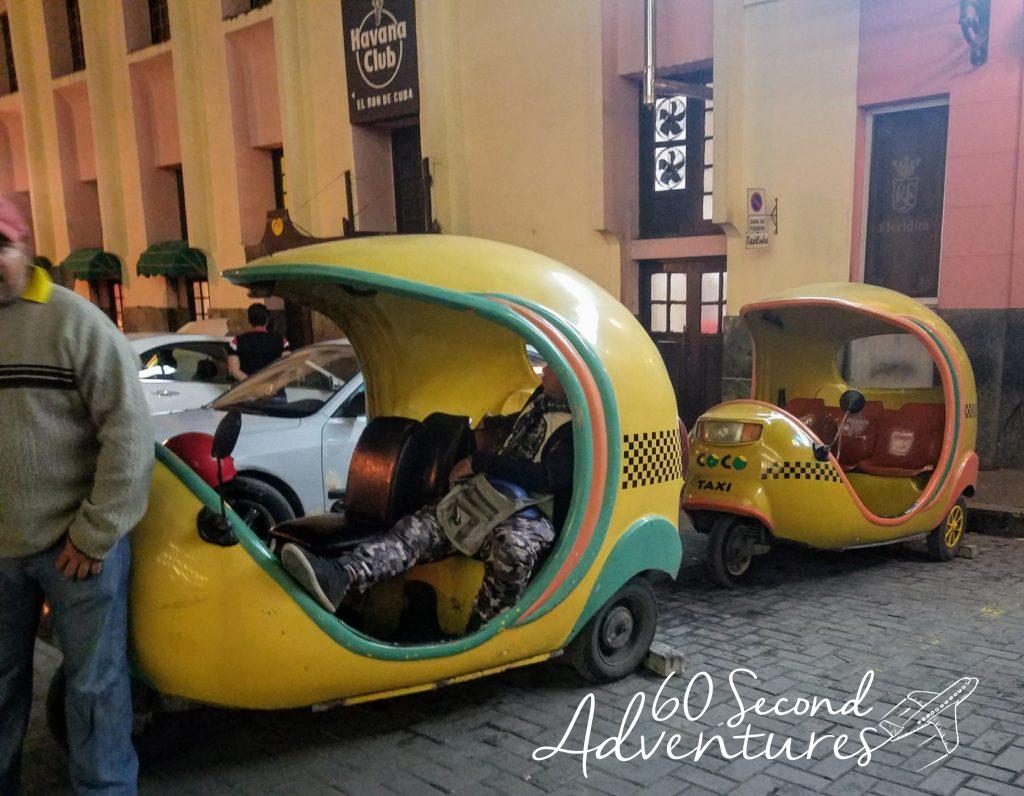
WATER
Don’t drink the water. Most locals even boil their water before using/drinking it due to bacterial contamination. Plan on bringing something like a LifeStraw to properly filter your water in the event you’re stuck in a dire situation, or exclusively drink bottled water. We also avoided ice (as it is hard to tell if they filtered it before freezing it or not), water rich vegetables/fruits, and anything that had a possibility of being under cooked. Food borne illness is common and is the number one complaint we heard from people that came back from traveling to Cuba. Eat/drink cautiously and bring medications in case you get sick.
FOOD
They cater to tourists in the big cities so you can expect most American staples if you look hard enough, and chicken, pork, rice, pizza are all abundant. If you are a picky eater, swing by a fancy hotel — their restaurants usually have more American food options.
A typical breakfast consists of juice, eggs, and fruit; lunch is usually a sandwich and ice cream, dinner they have a lot of fish options with rice and vegetables. They love drinking mojitos, daqueries and beer. If you are on a budget, you can get away with a bunch of bananas for breakfast $1CUC, a Sandwich + ice cream for lunch $4CUC, 1 large bottles of water for the day $1CUC, and a fish dish for dinner for $3CUC = $9CUC/day of food. If you head to the non touristy areas these prices go down significantly. If you are picky or want something more fancy, these prices will go up. We spent about $25CUC/day/person on food/drinks in Havana (the most expensive place to eat).
INTERNET/CELL SERVICE
Cuba does not have ample wifi or cell service. We have T-Mobile and although it works in Cuba, they were imposing extreme additional costs for using the service (opposed to the free data in most other counties while using T-Mobile). Due to the astronomical costs for calls/texts/data we went to airplane mode and resorted on using the wifi service. We found the best wifi was located at nice hotels. It cost 1.50 CUC for 1 hour of wifi and you could buy the wifi cards with login details from a few stores or people selling them on the street for an up-charge (we got our for double the price but didn’t have to wait in the long line — $3 CUC / 1 hour or $5 CUC for 2 hours). Also, it is important to note that you should book any Airbnb lodging before you arrive in Cuba because Airbnb’s website will not let you book a venue for Cuba while in Cuba. Granted, you can get around this by using a VPN.
MONEY
We converted at the airport and found the hotel currency conversion rates to be about the same. Cuba has few ATMs and very few places that accept credit cards. Regardless, US credit cards do not work in Cuba if you do spot an ATM or a place that accepts credit cards. You need to arrive with enough cash to sustain your trip. They charge 5% to convert Euros and CAD to CUC (convertible Cuban currency which is at a 1:1 ratio with USD). They charge 10% to convert USD to CUC. With that being said, convert your USD to Euro or CAD before arriving THEN convert to CUC upon arrival (and save 5%).
1 USD = 1 CUC (Convertible Cuban Peso)
1 CUC = 25 CUP (Cuban Peso)
Most things are in CUC in the tourist areas. When you go to places outside of the tourist areas, they use CUP and these places are significantly less expensive. You can exchange CUC for CUP at most stores.
People offering to change your money on the street will try and scam you. The conversion rates are set by the government, they cannot exchange for lower rates. They will try and give you 1 USD for 1 CUP instead of 1 CUC. You’ll be at a loss. Beware of what a CUC and CUP look like so you know the difference.
We paid for our Airbnb before our arrival so we knew we only had to pay for transportation, food and excursions. With that being said, we each brought $100 USD per day per person and it was way more than enough.
Havana is the most expensive of the cities, if you know Spanish and stay out of the touristy areas you can save a lot of money. The average Cuban survives on the equivalent to $25 USD/month.
SERVICE & TIPPING
The service is slow everywhere. They believe in the journey and aren’t a rushed society. If you have a schedule you are trying to keep, give yourself more time when going to sit down places. Quite often we had to get our servers attention to be seated, again for the menu, again to take our order then again to bring the check. I am still unsure if they would have noticed if we got up to leave without paying. Most bar experiences lasted at least 1 hour and restaurants 2 hours. They aren’t a tipping society, tips are appreciated but not mandatory. However, the locals (especially in non touristy areas) do not make much. Anything extra you have will go a long way for them. Side note: as of March 2017 you can bring 50 cigars from Cuba back into the US legally.
CIGARS — AVOID FAKES
Cuban Cigars — unless you’re buying at a government store, you’re probably buying a fake (this includes street vendors, random guys claiming they work at the factory and even hotel workers at cigar stands). Don’t waste your time or money. Most fakes are made from rolled banana leaves, it would be quite a disappointment. Government stores have set prices for the cigars as well, and these are not negotiable.
A few easy tell tale signs you’re buying a fake Cohiba cigar:
- The COHIBA letters should be raised and the colors are rich (if they are flat and the colors are dull — it’s a fake)
- Colors on the band have no tonal changes and no chipping/etching away, if they do — it’s a fake
- The white squares on the band are never cut off, if they are — it’s a fake
- There should be three rows of white squares above the COHIBA logo for 5 rows total. (Cohiba Behikes and other types may have different white square configurations)
- If buying a box, you can only buy them in boxes of 10 (any more or any less is not legitimate)
Here are a few bands of actual real genuine Cohiba Cigars
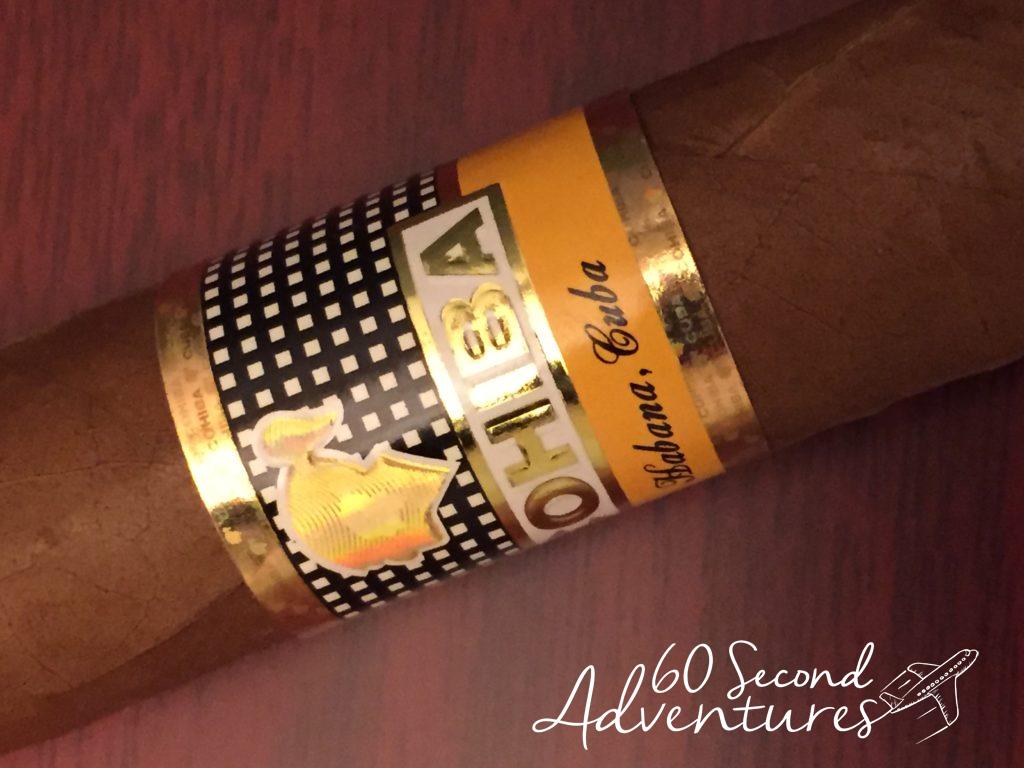



Here are a few fake Cohiba Cigars we saw (bought) while in Havana.
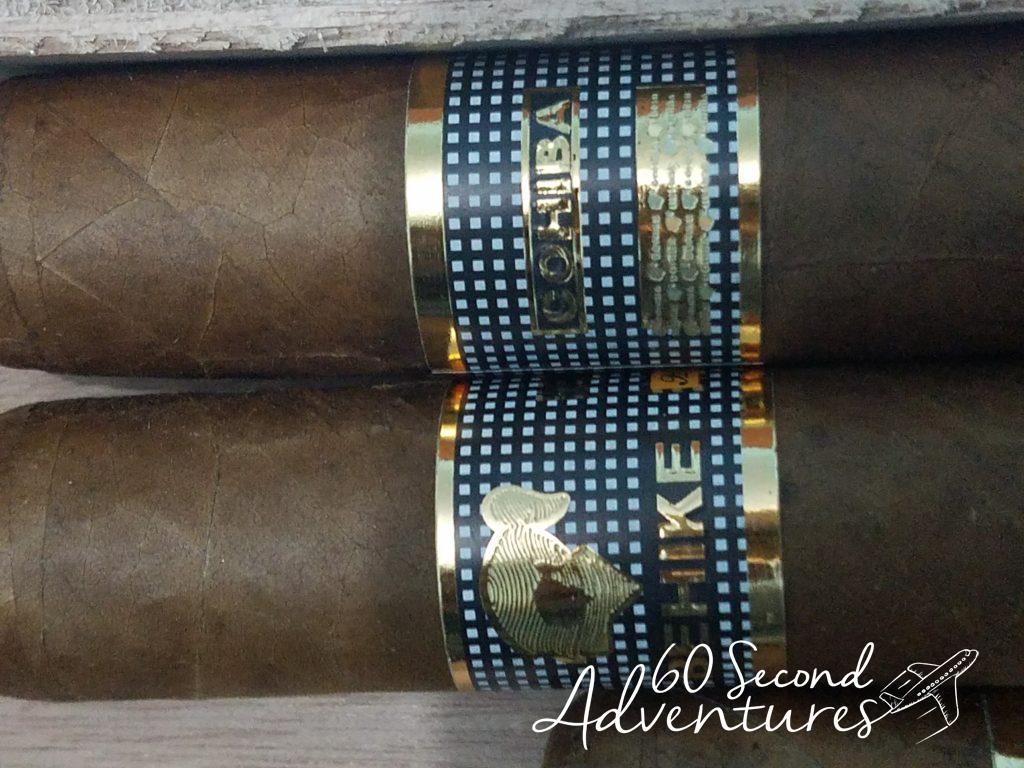
The band of the fake Behike Cohiba cigar has raised letters and a holographic emblem but it’s done sloppy. The trim is not equal, the emblem isn’t centered and the trim doesn’t have an emblem of it’s own (for starters) plus some of the paint on the band is chipping away.

These fake cigars have a rolled tip would would never be the case in a Cohiba. Others have the white squares cut off, and others are missing the proper emblems.
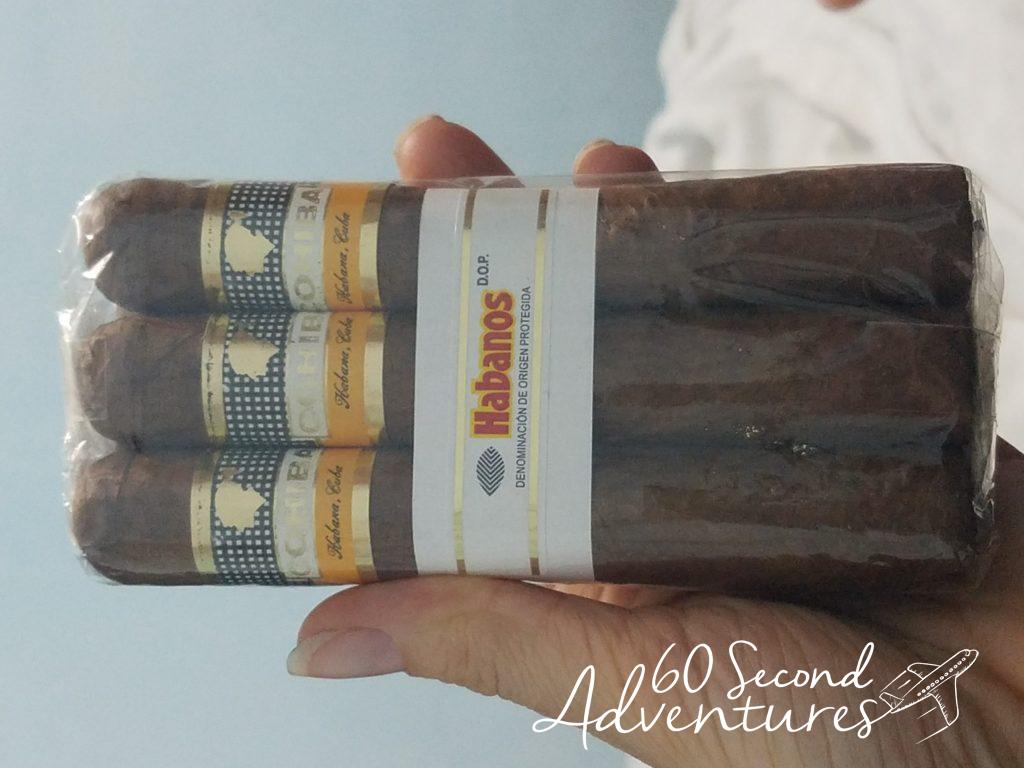
This package above is just sloppy. It wouldn’t be sold in a package like that, the paint is chipping off, emblems are missing, girls head has the wrong shaped nose and the letters aren’t raised.
BATHROOMS
Bathrooms are lacking, to say the least. Toilet paper is a luxury and toilet seats and locks aren’t always there. Bring your own Kleenex packets in case you’re stuck in a situation without any TP! We found only the very nice hotels had proper bathrooms (according to US norms). It’s nice to have hand sanitizer on you, too.
ACCOMMODATIONS
We stayed at an Airbnb in Havana and an all inclusive resort in Varadero (the only place left with same day availability for 1 night). The Airbnb was much less expensive and gave a more authentic feel. Often the hosts will cook breakfast for you, too. They are the same as a casa particulars — you stay in someones home or rent a room in a locals home. Costs for an Airbnb / Casa Particulares are between 10-35 CUC per day. Ours was 2 bedrooms and 1 bath for 30/night with up to 5 guests. They are marked with these signs (seen below in purple) so if you are looking for a place to stay when you’re there, look for this symbol, knock on the door and ask if they have vacancy.

You don’t have to book all your accommodations in advance if you don’t want to stay at a resort/hotel. Often the locals you are staying with will have connections to people in other cities that you can stay with. With that being said, it is recommended you book at least your first place to stay. However, keep in mind, with the influx of travel, winging accommodations on the fly is more risky. We tried this in Varadero and found that it was more difficult than expected to find a spot to stay a few days in advance because there aren’t enough casas particulares for the number of tourists currently traveling there. Worst case, bring a hammock so you can post up somewhere for the night.
Hotels and resorts are much more expensive. They are usually booked out well in advance by tour groups. However, you can usually still use their facilities (restaurants, pools, bathrooms, lounges) even though you are not staying in the hotel.
The beds are stiff, it’s just the way things are. Some of the very nice hotels have more plush mattresses so if it matters a lot to you, spring for the extra money and book well in advance.
TRANSPORTATION
CAR RENTALS: Car rentals are not realistic. They are expensive and the rental car fleet is small, plus, because there is bad internet/cell service and roads are poorly marked, it isn’t a great idea — you’ll probably get lost. If you do want to rent a car, finding something around 60 CUC per day would be a great deal — most are significantly more. Plus, a one way rental is going to impose a hefty drop off fee, too. If you want to reach places the bus does not go, we suggest taking the bus as close as you can then hiring a taxi over a car rental.
TAXIS: We recommend hiring taxis (we paid a few CUC for a ride a few blocks away, to $80 CUC for a 2 hour drive from Havana to Varadero). Taxi’s are negotiable, they know the way, they let you stop for photos (unlike a bus) and you usually get a cool car to take you there so extra bonus points for riding in style. Plus, the drivers (if they know enough English) will chat with you and give you great insight.
BUS: If you are on a budget and planning in advance, we recommend looking into the bus. Schedules, ticket prices and more can be found on the Viazul website (plus they’re air conditioned) here: http://www.viazul.com/. However, these need to be purchased well in advance as they usually sellout. Also, you should make sure you know where the bus station is in reference to where you’re staying as sometimes they’re tricky to find (especially since the roads aren’t usually well market). Always give yourself a bit more time to get there so you don’t miss it (they will leave without you and sell your spot if you do miss) and in case you get lost / can’t find it. But, this can save you a lot of money. Tickets are usually between $10 – $20 each way. If tickets are sold out and you still want to save money by taking the bus, if you arrive at the bus station well in advance you can see if someone no-shows or cancels in which case you can take their place (which our friends did).
RIDE SHARE: No, Uber and Lyft don’t exist in Cuba (yet) but you can create a ride share for yourself the old school way. Our friends flew into Havana and needed to go straight to Vinales. The bus didn’t leave from the Havana Airport so they took a piece of paper, wrote Vinales on it, and walked around until they found someone to split a cab with. It came out to around the same price as a bus ticket — $100 CUC for 4 people to get a taxi from the HAV airport to Vinales.
BIKES: You can rent bikes for the day or longer or even go on a bike guided tour. Check out this site for more details: http://bikerentalhavana.com/ Rate start at 15 CUC for the day without a guide and 25 CUC with a guide (but your party must be at least 2 people to get a guide).
SCOOTERS: Yes, you can rent scooters! There are several scooter rental locations throughout Varadero and Havana. Prebook or if you are winging it, just mark the locations closest to where you’re staying on a map and head there if you decide you want to check out the city on scooter (always fun)! One location in Havana is at 3rd near 30 in the suburb of Playa. One location (24/7) in Varadero is located just down the way from Gran Caribe Palma Real (at Avenida 1ra and Avenida Segunda). Prices are around 6 CUC/hour or $24 CUC for 1 day, longer rentals are less expensive.
WALKING: You can walk, most of Havana and Varadero are walkable and since it’s safe (day and night) no need to worry. It’s a great way to see the city, explore and stumble upon hidden gems.
FLYING: There are a few airports across the country. Depending on where you want to go once in the city, you may be able to fly domestically to your next stop. With airlines always changing their routes, it’s best to look this up yourself. It does make it easier if you fly into one city and can fly out of your ending city. With that being said, Varadero and Havana both have airports with airlines that service the US as of March 2017 and we utilized them during our trip.
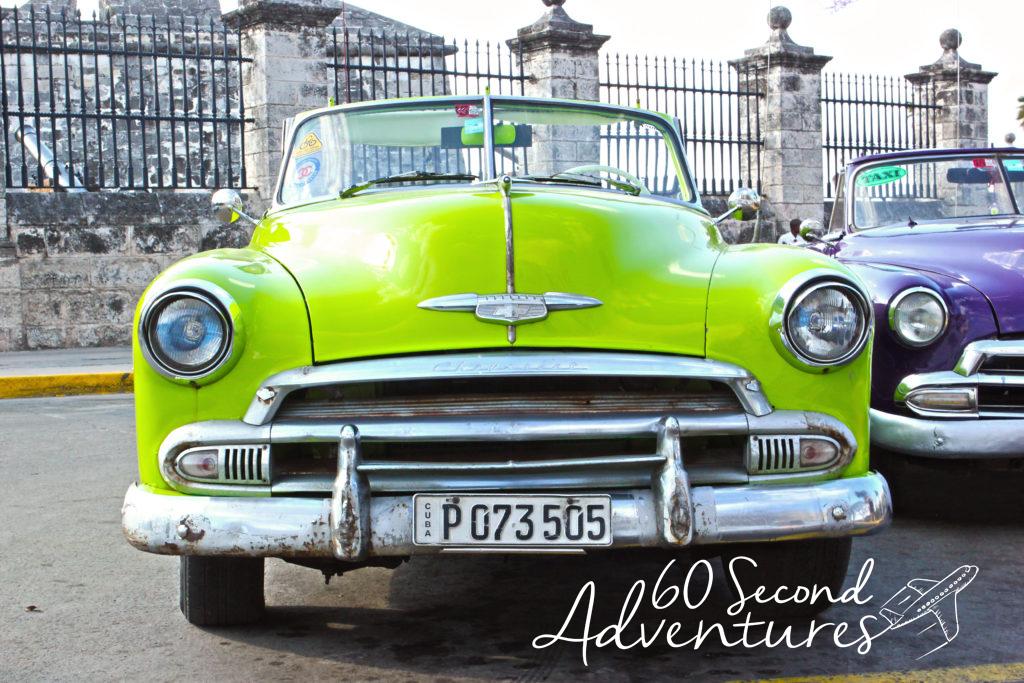
MAPS
Download a cached map of Cuba or an app with an integrated map. Google wouldn’t let us cache a map (like we usually do) so we downloaded and use the app called Map of Cuba Offline AND Cuba by Triposo. The latter has integrated walking tours, tips, points of interest, historical background and more for which reason we used it more heavily. Without this, you’ll be relying on maps you purchase or directions from locals.
LANGUAGE BARRIER / GOOGLE TRANSLATE
Most locals speak just a little bit of English at best (and we only speak a little Spanish at best) so we downloaded the Spanish portion of Google Translate ahead of time and used it to help communicate with the locals. It is a free app (again, download it before you go, though, because of lack of internet) which allows you to look up words, form sentences, translate, will pronounce sentences/words for you and more.
MEDICATIONS
They do not have a lot of grocery stores or convenient stores. If you find one, it is not well stocked (according to American standards) and medications are hard to come by. Pack any and all medications you may need even if you think it’s very common to find. We brought Advil, Mucinex, allergy medication, Imodium, Dramamine, cough drops, sunscreen and Kleenex.
HOMELESS ANIMALS
There are a lot of homeless dogs and cats walking the streets. We saw some with mange, others that looked very healthy, some puppies/kittens, older animals close to the end of their life and anywhere between. If you are an animal advocate and looking to help / have extra room in your carry on we were informed to bring dry dog/cat food and evaporated milk as it’s hard for the local animal advocate groups to get their hands on these items and they are most needed by the animals.
CUBAN LAND AND JOB REGULATIONS
It was interesting to learn that Cubans do not own their homes, the government does and they rent the land the home is on from the government. They cannot own businesses, the government owns those, too. To evade these regulations many will work as a contractor or within a cooperative, all the while documenting everything as to appease government rules. This includes places like hotels and Airbnbs. The venues need to document the visitors, we had our passport details copies at each location we stayed at.
WARDROBE IN CUBA
When we landed the first thing we noticed was the very sexy dressed female airport security guards. They were wearing tan uniforms with short tan miniskirts and tight fitting tops topped off with black fancy fishnet pantyhose, heels and bright red lipstick. This theme was repeated by locals during our stay — women and men alike loved wearing vibrant colors with well fitting outfits. The women had shorter and more revealing pieces while the guys dressed sharply if they could afford to.
SCAMS
We listed these throughout but here’s a recap of some of the scams we found in the city.
- Cigars being sold anywhere outside a government store are usually fake. Buyer beware.
- If someone offers to escort you places, they will probably ask you to pay them. Often times they’ll ask to go to a bar with you (one they choose), order drinks, then when the bill comes ask you to foot it. The venue is in on it. The bartender will charge you higher prices and split the dividends with the person that brought you in.
- People changing money outside currency exchanges will try and give you CUP instead of CUC. Be aware what each dollar looks like as to ensure you are getting the right type of currency back because 1 CUC = 25 CUP. If they pretend to give you CUC instead of CUP, you’re losing a lot.
- Any hustlers in the street claiming to get you a good deal is probably going to rip you off or sell you a bad product.
BOOKING EXCURSIONS
Planning in advance is helpful but not always realistic. If you are winging it when you’re there — and want to do something but don’t know where to go? Ask a local – most of the time the Airbnb hosts were able to help us plan our excursions while we were there! If you have something specific you want to do but it isn’t booked and you can’t find someone to make it happen– head to a hotel/resort. Everyone hotel went to had someone that would be able to arrange an excursion for us if we wanted, even same day, and even if we weren’t staying at the hotel.
SCUBA DIVING
We heard scuba diving there is some of the best in the world. It’s so untouched due to the lack of tourists over the past few decades. Some things to note: you need 24 hours before your flight to scuba due to the nitrogen tanks you use so keep this in mind when planning your trip. If you are dead set on scuba diving during your trip to Varadero, if the waters are rough in Varadero they will take you on a long car ride to the opposite side of the island, to the Bay of Pigs, where a boat will take you out for scuba diving there. This turns it from a half day activity to a full day activity. Allocate enough time in case this happens to you. No one we talked to cared if we had a Padi scuba license or not (as the guys in our group were certified but we, the girls, were not). Although we didn’t go scuba diving in Varadero, our friends ended up doing a dive in Trinidad (they booked it when they got there) through their Airbnb host.
SUGGESTED EXCURSIONS IN HAVANA (suggested length of stay 2 nights):
- Classic Car rental — have them take you on a tour
- Cooking Class
- Salsa Class (several are scattered throughout the city) http://www.bailarencuba.com/lacasadelson/index.php/es/
- Bike Rental http://bikerentalhavana.com/
- Castle Tour — Castillo de San Carlos de la Cabana https://www.tripadvisor.com/ShowUserReviews-g147271-d149139-r146888525-Castillo_de_San_Carlos_de_la_Cabana-Havana_Ciudad_de_la_Habana_Province_Cuba.html
SUGGESTED EXCURSIONS IN VARADERO (suggested length of stay 2 nights):
- Scuba diving
- Snorkeling
- Sailing
- Caving
- Golf
SUGGESTED EXCURSIONS IN TRINIDAD (suggested length of stay 2 nights):
- Sailing
- Scuba Diving / Snorkeling

- Hiking to Waterfalls
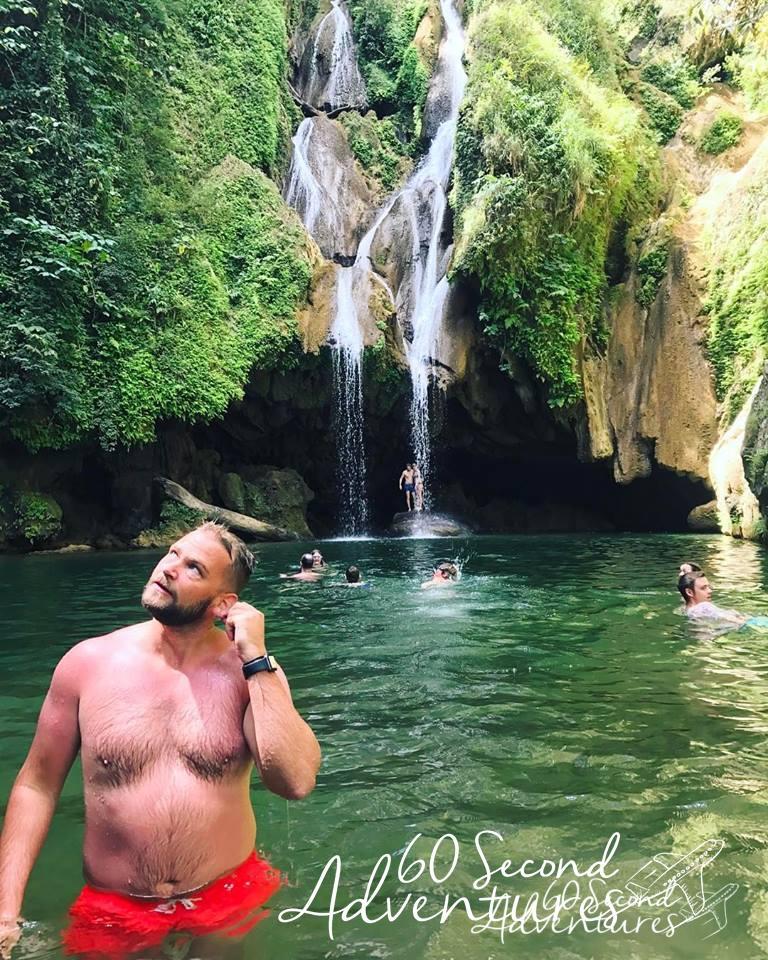
SUGGESTED EXCURSIONS IN VINALES (suggested length of stay 2 nights):
- Horseback riding
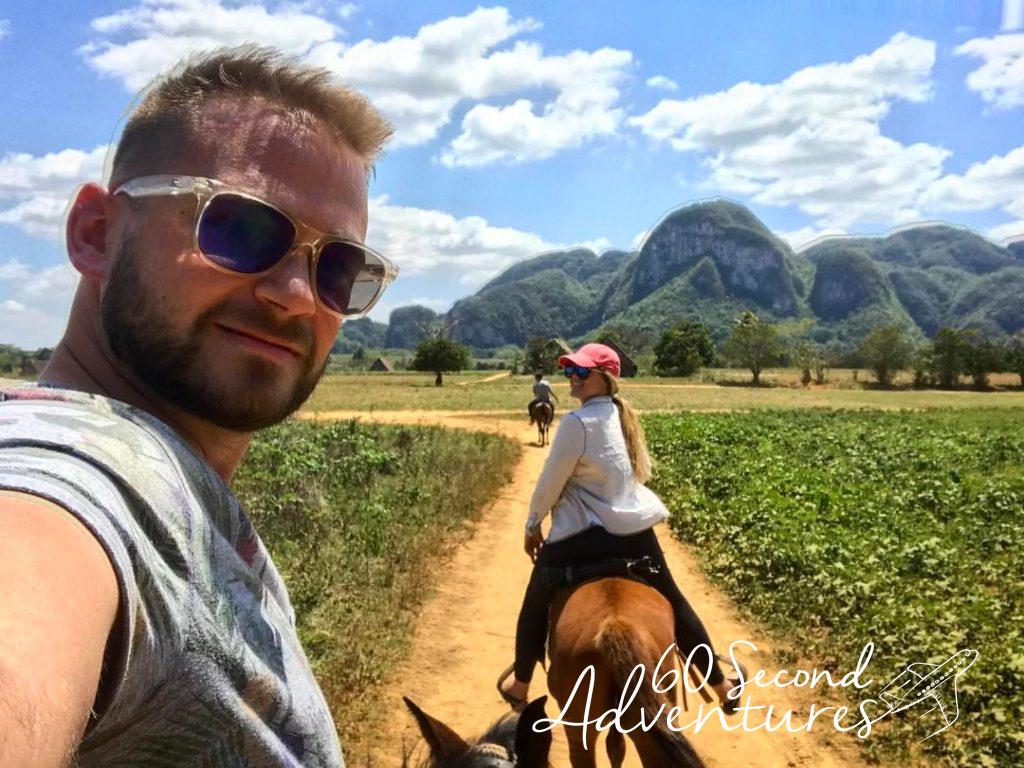
- Tobacco/Cigar tour (farm tour and rolling)
- Caving
- Hiking
Packing List for 5 days in Cuba
- 10 Granola / Energy Bars
- 1 Reusable Water Bottle
- LifeStraws
- DSLR + DSLR Charger
- Laptops (we each brought one) and headphones
- USB cords for phones/laptops/headphones
- 2 pairs of shorts each, 1 pair of pants each, 1 dress, 3 tank tops each, 1 button up, a longsleeve zipup to layer each and a light weight casual coat each, hat, 1 swimsuit each
- 3 days worth of Socks + 5 days worth underwear
- Walking shoes and flip flops
- Sunglasses
- Minimal toiletries (small soap / shampoo / conditioner / razor, deodorant, toothpaste, toothbrush, contact solution, sunscreen, hair gel, brush/comb, nail clippers)
- Kleenex packets for bathrooms
- Meds: Advil, Mucinex, Allergy medicine, Imodium, Dramamine, cough drops
- snorkels/masks each, wet suit
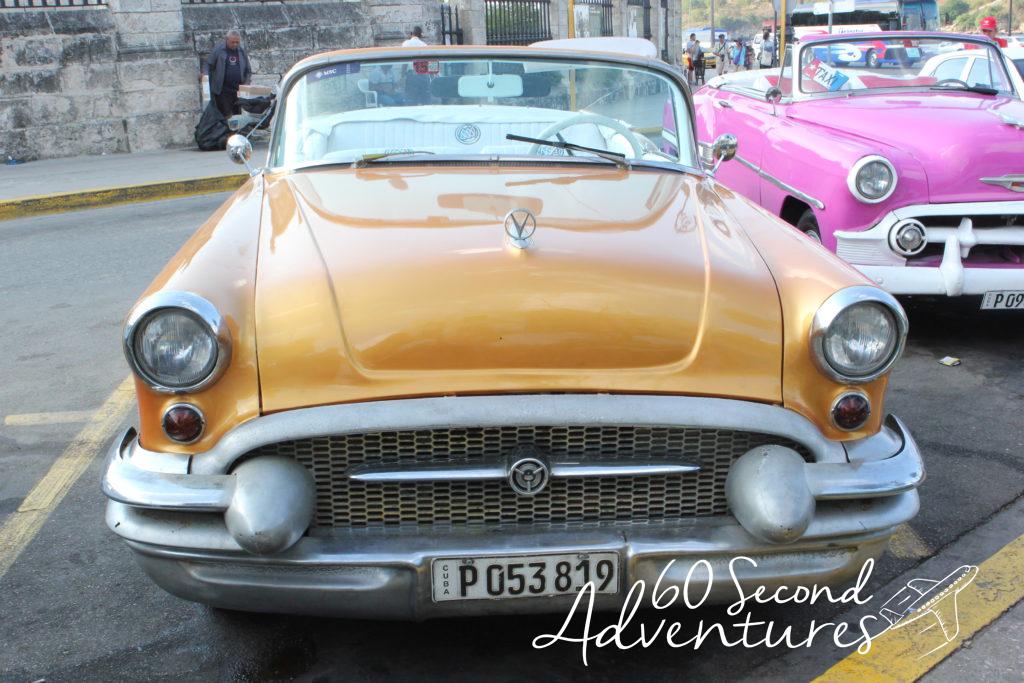
Where to go in Cuba:
If you click on the four corner icon to the right you can open it up in a new window and click on the icons to read the information for each location (pricing, hours, important details) as well as download it or save it to your My Maps for Google to reference during your trip.
Havana, Cuba History:
- It was founded by the Europeans in 1509 and the first settlers (Spanish) came in 1510.
- The country was found to be lacking in gold, silver and precious metals so many early settlers moved to Mexico and South America in search of more wealth
- Havana was used as a trading port (this helped develop the cities agriculture and manufacturing since the ships coming in had to be supplied with food and goods to make the oceanic trip) and suffered regular attacks by pirates (the first occurring in 1555 when it was also burned to the ground) which prompted the Spanish Crown to fund fortresses across the city and country to gain control over the trade of goods happening at the ports (and thus why there are old castles scattered throughout). Goods traded included gold, silver and alpaca wool from the Andes, emeralds from Colombia, mahoganies from Cuba and Guatemala, leather from Guajira, spices and sticks of dye from Campeche, corn, manioc and cocoa. The goods would arrive in port in Cuba then be placed on a fleet and sent to Spain.
- In 1674 a further fortification effort was started then completed in 1740 at which time Havana had more than 70,000 inhabitants and was the third largest city in the Americas (behind Lima and Mexico City — but ahead of Boston and New York).
- In 1762 it was captured by the British during the Seven Year’s War and opened up trade with their North American and Caribbean colonies which quickly transformed the city — slaves were brought in from West Africa to work the sugar plantations, horses, and food
- A year after the British took it over, a treaty was signed to end the Seven Years War which gave the British Florida in exchange for giving the Spanish Havana back. They then made it the most fortified city in the Americas (you’ll see a lot of canons throughout — some used a sidewalk posts)
- In the 19th century, during the Spanish-American War, the US had its warship, Main, sunk in port which then caused the US to take Cuba from Spain and under occupation. This created an insurgance of new life with an American zest — famous celebrities visited like Frank Sanatra, Ernest Hemmingway, Gary Cooper and hundreds of thousands of American tourists flocked there. The casinos and hotels were thriving and it invited mafia figures into the city, too.
- Social strife mounted in the country and in 1952, due to a political radicalization, Fulegencio Batista was a US backed dictator that ruled the country
- In 1959 Batista was ousted during the July 26th Movement and Fidel Castro took over leadership.
- 1961 the US CIA backed an attempt for the Brigade 2506 to take over Cuba through the Bay of Pigs invasion but it took 3 days for Cuban rebellion to defeat the forces.
- During the Cold War between the Soviet Union and US, a nuclear war nearly broke out. Cuba requested from the Soviets that nuclear missiles be placed in Cuba to deter future invasions. This agreement was reached between Fidel Castro and Khrushchev in July 1962 and construction of several nuclear missile launch facilities started later that summer. During the US elections a U-2 spy plane had photographic evidence of the construction of the facilities in Cuba. The US created a military blockade and would not permit any additional delivery of weapons to Cuba (as they are only 90 miles from US soil) and demanded the weapons already there be dismantled and returned to the USSR. This caused the Cuban Missile Crisis of 1962. It lasted 13 days and was a series of negotiations between the US and Soviet Union’s Khrushchev. They agreed to dismantle their offensive weapons in Cuba and return them to the Society Union, subject to United Nations verification, in exchange for U.S. public declaration and agreement to never invade Cuba again without direct provocation. U.S. also dismantled their missiles they placed in Turkey and Italy which was unknown to the public.
- The Revolution started in 1959 after which Castro expropriated all the private property in the country (all land is now owned by the government), all privately owned businesses became nationalized, everything moved toward a communist society, Cuba became backed by the Soviet Union after which the U.S. Embargo took effect. All these aspects hit Cuban hard and forever altered the city from a thriving mecca to an isolated place that would then be stuck where it was left in the late 1950’s.
- Che Guevara was another a very influential revolution leader that later died at the age of 39 in 1967 in Bolivia. He was a big advocate for the universal education and healthcare that is still around in Cuba today. He saw the US capitalistic society exploiting Latin America and sought, as he was a well educated medical student himself, to fix the injustice by radicalizing the poverty, hunger and disease he saw so frequently. He joined forces with Fidel in overthrowing the US backed dictator, Batista, through a 2 year guerrilla campaign. Post revolution, he assisted in the literary campaign with armed forces and land reform. He left Cuba in 1965 with the hopes of revolutionizing Congo-Kinshasa (unsuccessfully) and then Bolivia where he was caught by US CIA assisted Bolivian forces and executed for crimes without a trial (summary execution).
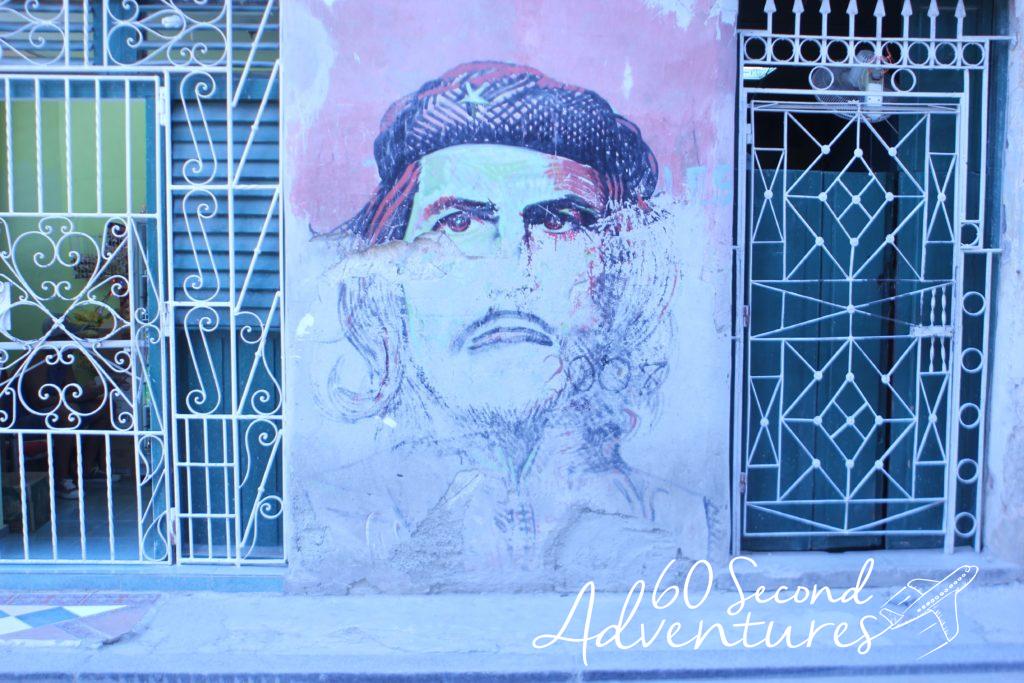
- Since 1965 Cuba has been governed by the Community Party of Cuba.
- Soviet Union helped support Cuba after the embargo was enacted but when the Soviet Union collapsed in 1991, the Cuban economy took a more sever downturn. You’ll find old American classic cars from the 1950’s but cars from the 1960’s-1990’s are all Russian / Soviet Union made cars (and there are a few modern cars, these days, too).
- After 50 years of prohibition, the government turned to tourism for a financial revenue stream to keep it afloat allowing foreigners to build hotels and aid in the hospitality industry. Tourism hit 2.7 billion USD in 2008 and has continued to climb. However, although foreign investment is welcome, locals are not allowed to participate — they are not allowed to become owners or investors of property.
Havana, Cuba Fun Facts:
- It was known as the Paris of the Caribbean during it’s high point in the 1930’s
- Cubans receive free education and thus have a 99% literacy rate, it’s a proud aspect for locals to tout
- Despite the entire country having free health insurance, they do not have a lot of medicine. You can get diagnosed if you have an illness but if you need medicine to treat it, that will be much more difficult to find
- Between 1902 and 1959 Cuba was booming, it had the third largest middle class in the hemisphere
- 15% of Cubans don’t live in Cuba despite a ban on free travel by the regime. It went from the largest emmigrant destinations in the early part of the centry to the largest immigration creators
- Ernest Hemingway spent 22 years living in Cuba where he wrote many of his famous novels
- With the governments strong stance on crime and punishment, there is little to no drug, gang, or prostitution issues and very little petty crimes.
- Politics is a topic to avoid as talking bad about current or former leaders can have ill repercussions
- Top local mixed drinks: Mojitos, daqueries and a Cuba Libre (similar to a rum and coke).
- Top beers in Havana: Cristal and Bucanero
Varadero, Cuba Background:
- It was relatively uninhabited when Havana was being colonized and settled from the 1500’s through most of the 1800’s
- It wasn’t until the 1857 that it had residencies there. At that time 10 families were given permission to build their summer homes in Varadero
- Currently it’s heavily visited by tourists but there aren’t many authentic / local establishments there due to the history and setup
- It’s known for it’s diving, boating, beach and caving excursions — all which visitors love
Experience Highlights
Fabrica De Arte
Description: A multiple story warehouse club with DJs, live bands, and various art exhibits throughout
Location: Calle 26, La Habana, Cuba
Cost: $2 CUC cover and drinks are as little as $3 CUC.
Hours: 8pm-3am
Website: www.fabricadeartecubano.com
Notes: The line gets long but usually moves fast. Before you go to Fabrica de Arte Cubano we would suggest getting a dinner reservation (around 7pm) for Paladar la Esperanza nearby — very good food and great atmosphere plus not too far away.
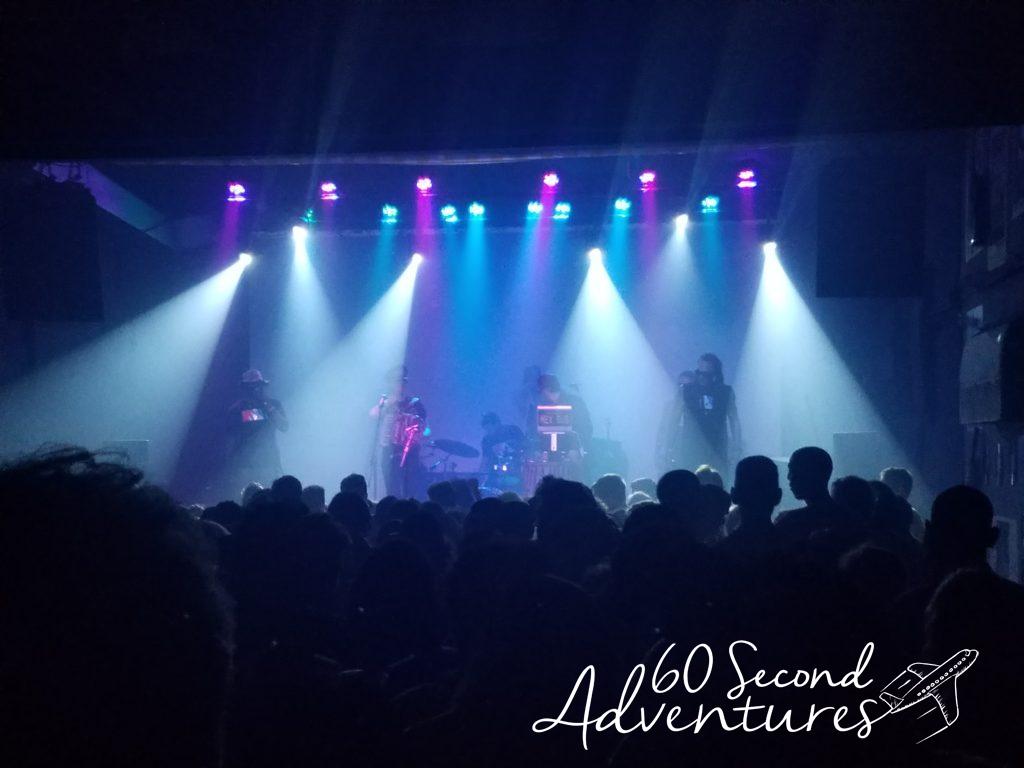
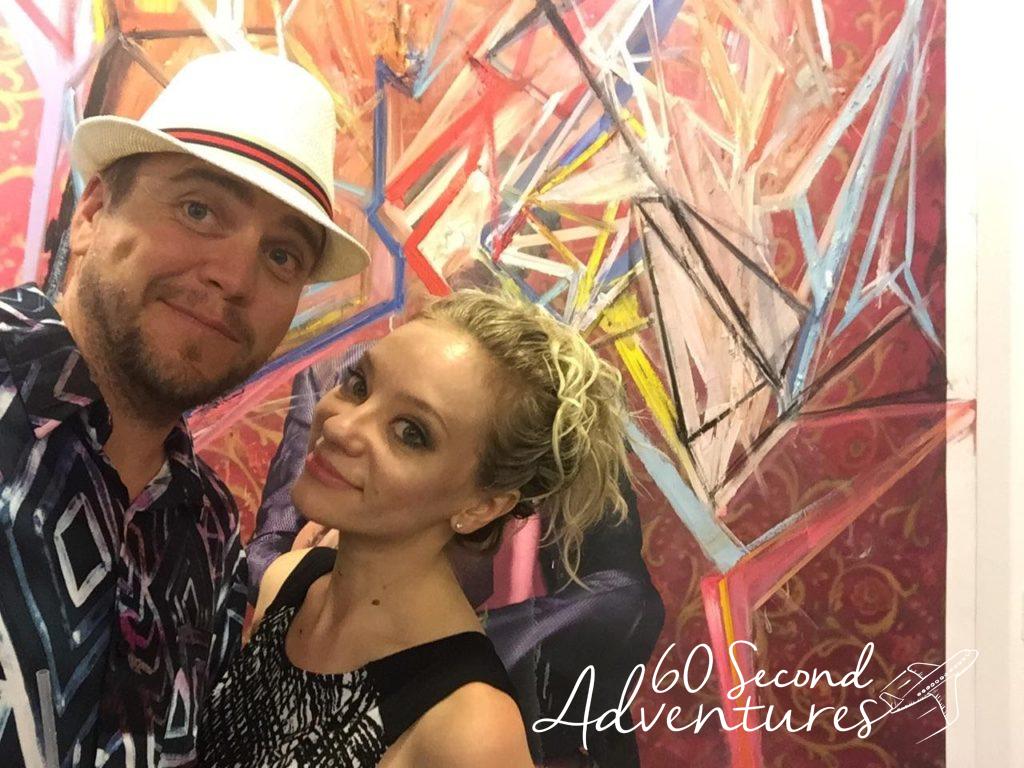
Rooftop Pools / Restaurants
Description: Staying at an Airbnb? Sneak into a nice hotel and enjoy their pool!
Location: Parque Central and the hotel next to there and Sloppy Joes in Habana, Cuba
Cost: free, bring your own towel (just don’t get caught)
Hours: most close the pools around 8pm
Notes: If you order food or drinks while you’re up there, no one will care

Cuba Costs: $1991 for 2 people for a 4 night / 5 day Cuba trip to Havana and Varadero (all prices in USD)
- $893 RT flights for 2 people from SFO to HAV ($446.5 each)
- $150 Visas for 2 ($75 per person through United as of 3/20/17)
- $16 for souvenirs ($12 Cuban hat, $2 shot glass, $2 cigar cutter)
- $125 on Cigars
- $10 on waters
- $30 cab from HAV airport to Havana Airbnb
- $30 cab from Varadero resort hotel to VAR airport
- $80 cab from Havana to Varadero for 4 people (stopped for photos along the way)
- $30 classic car 1 hour tour in Havana
- $25 classic car 1 hour tour in Varadero
- $20 ($10 each way) cab to/from club Fabrica de Arte Cubano
- $20 2 huge drinks at Fabrica de Arte
- $116 hotel in Varadero (Mar del Sur, 1 night, was further split between 4 people)
- $21 7 hours worth of wifi/wifi cards ($3 CUC each from a street vendor)
- $215 for 4 days/3 nights worth of food for 2 people in Havana (food/drinks were free / included in ‘all inclusive resort’ in Varadero): 2 Pizzas , 2 salmon bagels, 2 egg breakfast meals, chicken dinner, fish and chips, 2 churros, 2 ice cream cones, 2 homemade chips, 1 bunch of bananas, bruschetta plate, sausage/cheese plate, birthday dinner for our friend – Dave (sandwiches for 4 people), 2 salads, wrap on the airplane, various drinks (with no ice)
- $109 Airbnb in Havana for 3 nights (was further split between 4 people)
- $24 ($10 each to skip the line at Fabrica de Arte and $2 CUC each for cover)
- $97 Ramada hotel in Newark EWR
OUR TRIP
We went with another couple, Dave and Heather, as it was Rodney’s friend’s (Dave’s) birthday during the trip. They flew into Havana and caught a cab to Vinales first, then met us in Havana, went with us to Varadero then after we flew out of Varadero they went to Trinidad (and caught a cab to fly back out of Havana). They had a better schedule than us but we had work and couldn’t be off grid that long, unfortunately.
After our arrival, we waited in a long line at the Havana airport to change our money (expect up to 1 hour if you’re caught in a time when multiple planes land) then hailed a classic car to our Airbnb. I insisted. No regular cab for us, I wanted to be driven in something with character (especially if they were the same price) so we waited and found a blue beauty to take us into town. Our driver was as cool as his car. With his collar popped he blared his music that bumped that Cuban beat.
Upon meeting our Airbnb host we handed over our passports (language barrier created some issues but we eventually understood what she was saying) which she copied our details into a notebook (we were a bit skeptical at first, afraid we weren’t going to get them back). Then showed us how to use things in the apartment. It was missing one door handle and the beds were stiff but we didn’t care. And just like that, we were off to explore.
We wandered around looking for a grocery store thinking they would have packaged food and it would be safe to eat. But, we only found a series of places we did trust that smelled like barns and had food questionably sitting out in the open. The main grocery store, Harry Bros, that the locals told us to check out was closed due to no electricity. Welcome to Cuba, I thought to myself. After much walking around and upon hunger setting in, we opted for a busy pizza place with the ironic name of ‘Paris Cafe.’ We came all the way to Havana to eat Pizza from a place trying to emulate Paris. For $3 we didn’t care, we ordered two pizzas and a drink. The service was slow. It was the Cuban way. We had to hail a server to be seated in their outdoor cafe, again for a menu, then hail them again to take our order and after eating, hail them again for the check. We soon learned this was typical. We made friends with a young Danish guy that was traveling solo and meandered the city together, venturing into a rooftop venue to watch the sunset then to a local square where we listed to a live band.
The next day we figured out the internet situation. There was a guy the day prior standing in the street saying ‘wifi’ offering a card which we thought was questionable at the time. But, the Danish guy we met the other night assured us it was legit. So we ended up buying the same card from a guy selling them out of his house and posted up where the signal was strong — by a fancy hotel (Parque Central). After cranking out some work on our laptops, we left and met up with our friends that just arrived and wandered about together. We checked out a rooftop pool at a nearby hotel with sweeping views of the city. There wasn’t a cloud in the sky that day. Then walked around grabbing bites of food as we went to another rooftop spot then through the neighborhood streets taking in the local sights and sounds. We started on a self guided walking tour through Heather’s Cuba app but hunger set in as the sun was setting so we went to another rooftop hotel restaurant to watch the sunset and get a bite to eat. It was beautiful and there was hardly anyone there. The food was more expensive according to Havana standards but it was worth the view. We later went home to freshen up (only to learn the water stopped running in the entire apartment and wasn’t on again until the day we left) and try to fish an ear plug out of Dave’s ear. The Airbnb he stayed at in Vinales had chickens that crowed every morning so he used ear plugs to drown out the sound (as he’s done before) but this time when he went to take it out, only part of the ear plug came out and part was stuck in there. We tried with a light and tweezers but couldn’t it fully dislodged. He was a trooped and said not to worry so we then headed out to the local square for a nightcap.
Friday, the next day, was our friend, Dave’s, birthday. We all woke up a bit late then went out to get internet. The couple we were traveling with was suppose to book an Airbnb for everyone in Varadero (as we took care of Havana) but didn’t so we were scrambling to find a place to stay. However, we learned that you cannot book an Airbnb for Cuba while accessing the internet in Cuba — it’s banned. We decided that we would just figure it out when we get there and dismissed the concern for the day. Then headed to the local market for souvenirs where everyone seemed to selling the exact same things. It made the trinkets and their dealers feel a little less authentic. On our way back we stopped to get lunch where we convinced the band at the restaurant to sing happy birthday to our friend. As we made our way back we stopped in the Parque Central where they had a cigar vendor setup in the hall. He was supposedly selling Cohiba Cigars along with a host of others. We later found out this fancy five star hotel had duped us. The cigars were fakes. Buyer beware. Lesson learned — if you don’t know anything about cigars, you probably should try buying some. Later that night we went to a club called Factoria de Arte where we were immersed in local musical flare and art — we loved it. It was our last night in Havana.
On Saturday we packed up then went online to check emails before catching a cab to Varadero. The driver was very nice and told us all about the culture, it was a great 2 hour ride. He tried to help us find a place to stay but after 30 minutes and no luck, we let him leave in fear of taking up all his time. We learned that it is hard to book a place the same day since tourism is increasing, it is also hard to find a place to stay same day if you are only looking to stay 1 night (many places only take people for a minimum of 5 days). A local resort that was fully booked ended up calling a few places and found one that would take us for the night. The upside was the food/drinks were included so our costs would be minimal above the $30CUC per person fee. We checked in then headed to the beach. The wind was blowing and the water was rough. Despite bringing snorkel gear, we didn’t get much water time in. I decided it was too cold to go in and tanned in the sun (with a blanket over me) while everyone else played in the waves for a bit. Rodney and I headed back to freshen up then head shortly after to try and find a scooter to take up the peninsula while Heather and Dave stayed in the water. Upon dropping our stuff off at the resort, we learned that our water wasn’t warm — it was either freezing cold or cold. As far as water is concerned, we were 0/2 but made the most of it and did a quick-rinse for sake of cleanliness. Although there is a 24 hour scooter place open with 3 scooters in their driveway near 60th street (see the map), the door was locked and the operator had her purse inside but she was no where to be found. So, we decided to rent a cab/cab driver for the hour and had the driver show us around and take some pretty photos. We were told car rides to the airport in the mornings were tough (and our hotel said they could be as much as $100 CUC) so we convinced our driver to meet us the next morning at our hotel and take us to the airport for $30CUC. We went all the way up to the marina and talked to a few people there. We were hoping to get an early morning boat ride in but learned they only have 2 times that they leave at per day and if the waters are rough (as they were) the ride may not happen. The same goes for scuba diving. We had hopes of going diving while there but because you need 24 hours before your flight to scuba and we arrived much too late in the day in conjunction to the rough waters, we were out of luck. We met back at the hotel where we all ate dinner and Rodney and I napped shortly after waking up in time to squeeze in some night photography.
The next morning Heather and Dave, although they didn’t have a bus ticket and the bus was sold old, went to the bus station hoping for 2 cancellations and were in luck. They caught the bus at 7am to Trinidad for $20CUC each (opposed to a car ride which would have been closer to $200 CUC total) and were on their way. We woke up closer to 10am, packed, ate breakfast and as we walked out saw our cab driver from the day before waiting to take us to the airport. He was really nice and stopped along the way so we could take some last minute photos. The airport was much easier than we expected and a little less busy than Havana. We boarded our plane shortly after and were on our way back home.
Itinerary
- Tuesday
- 3pm Fly from SFO to EWR (landing around 10:30pm
- 11pm Arrive at the Hotel in Newark, NJ
- Wednesday
- 8am head to the EWR airport
- 9am get our Visas at the airport
- 10am get on our United flight to HAV
- 2pm land in HAV
- 3pm clear customs in HAV
- 3:30pm exchange our money at the airport for local currency CUC
- 4pm catch a classic car from the airport to our Airbnb ($30)
- 4:30pm arrive at the Airbnb and get situated
- 5pm head to the main drag in the city and wander a bit
- 6pm decide on a pizza dinner at Cafe Paris where we make friends with a Danish guy traveling solo. A local was outside sketching patrons and giving away free pictures he drew of them, Rodney got one!

- 7:30pm head down the block to a rooftop for a drink at Boutique Hotel Ambos Mundos

- 8:30pm head into the main square (Plaza Vieja) with the Danish guy for another drink / snacks at Factoria Plaza Vieja. You can’t miss it — it has the 3 meter high beer table toppers everyone is sharing (that only costs 12 CUC)!
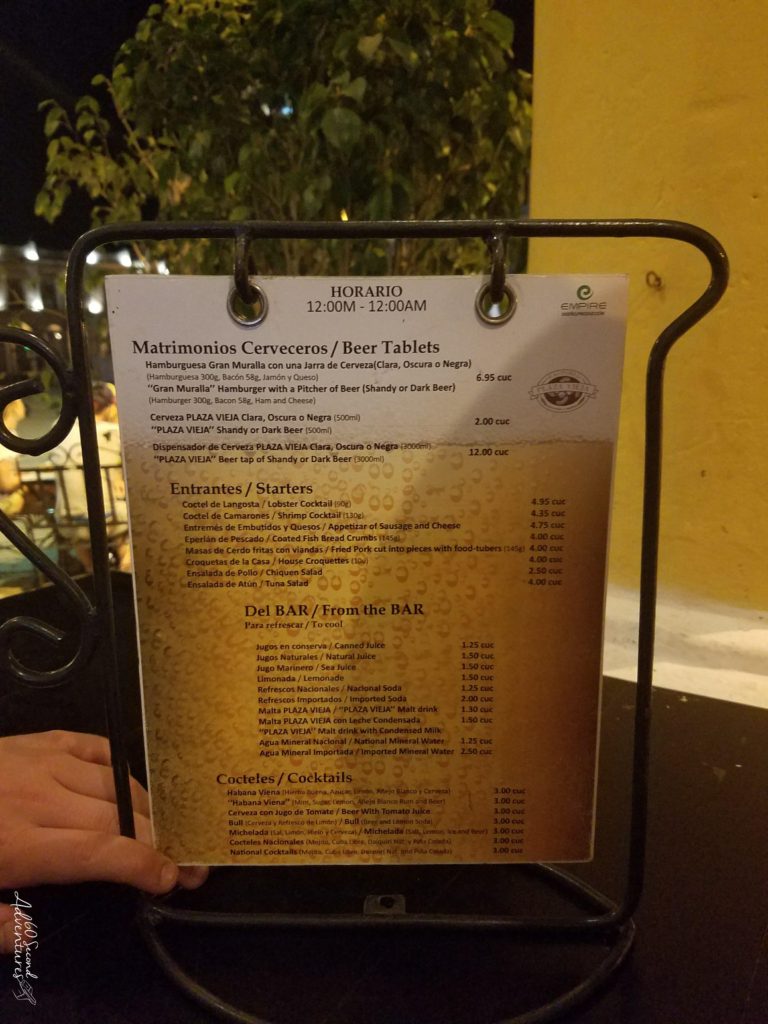
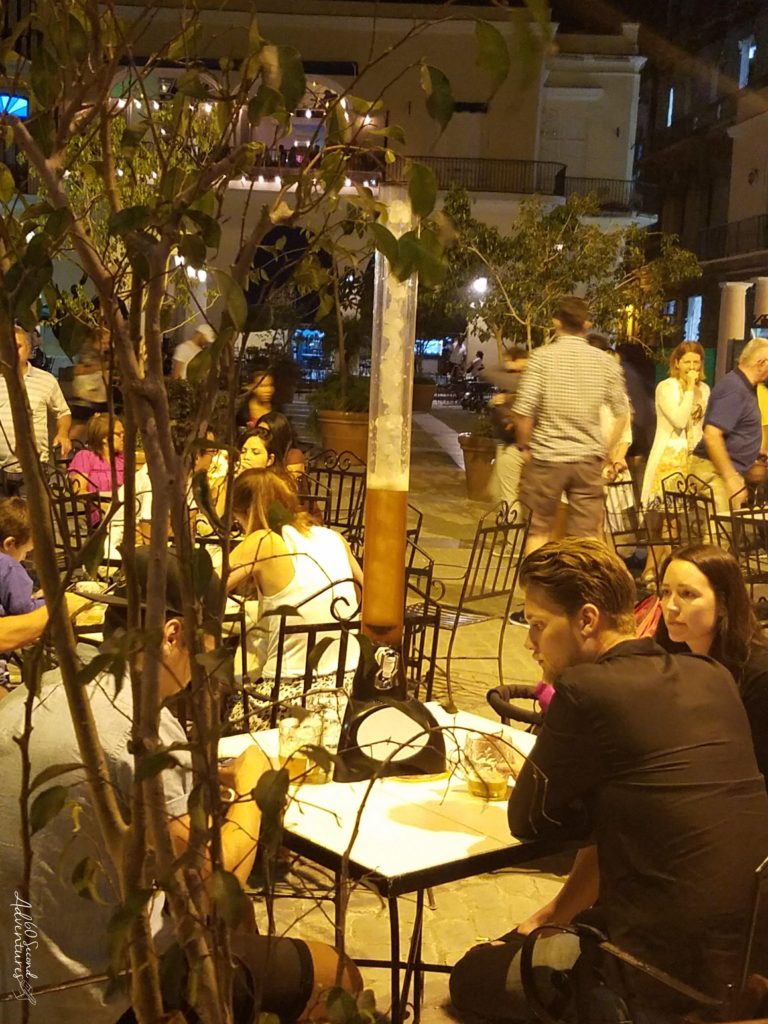
- 9:30pm pop in La Floridita (bar made famous by it’s former frequent visitor, Ernest Hemmingway — very touristy)
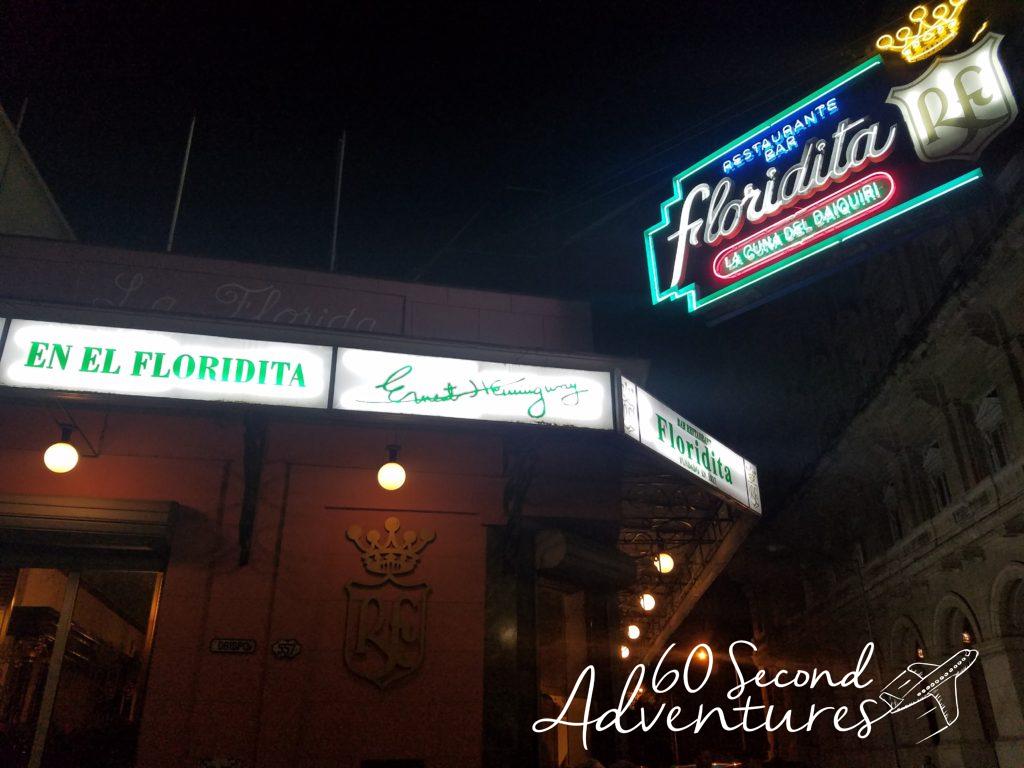
- 10pm head home
- Thursday
- 9am wake up and head out, wandering around looking for breakfast/internet
- 10am buy bananas and bottles of water from a street vendor
- 10:30 get conned into buying fake Cohiba Cuban cigars from a local
- 11am buy internet cards and a water bottle then head to the Parque Central hotel where we find internet connectivity
- Noon head back to the Airbnb to meet our friends that arrived into Havana
- 1pm head out for lunch at Parque Central and hopped on the internet again, checked out their rooftop pool and restaurant (view from on top)
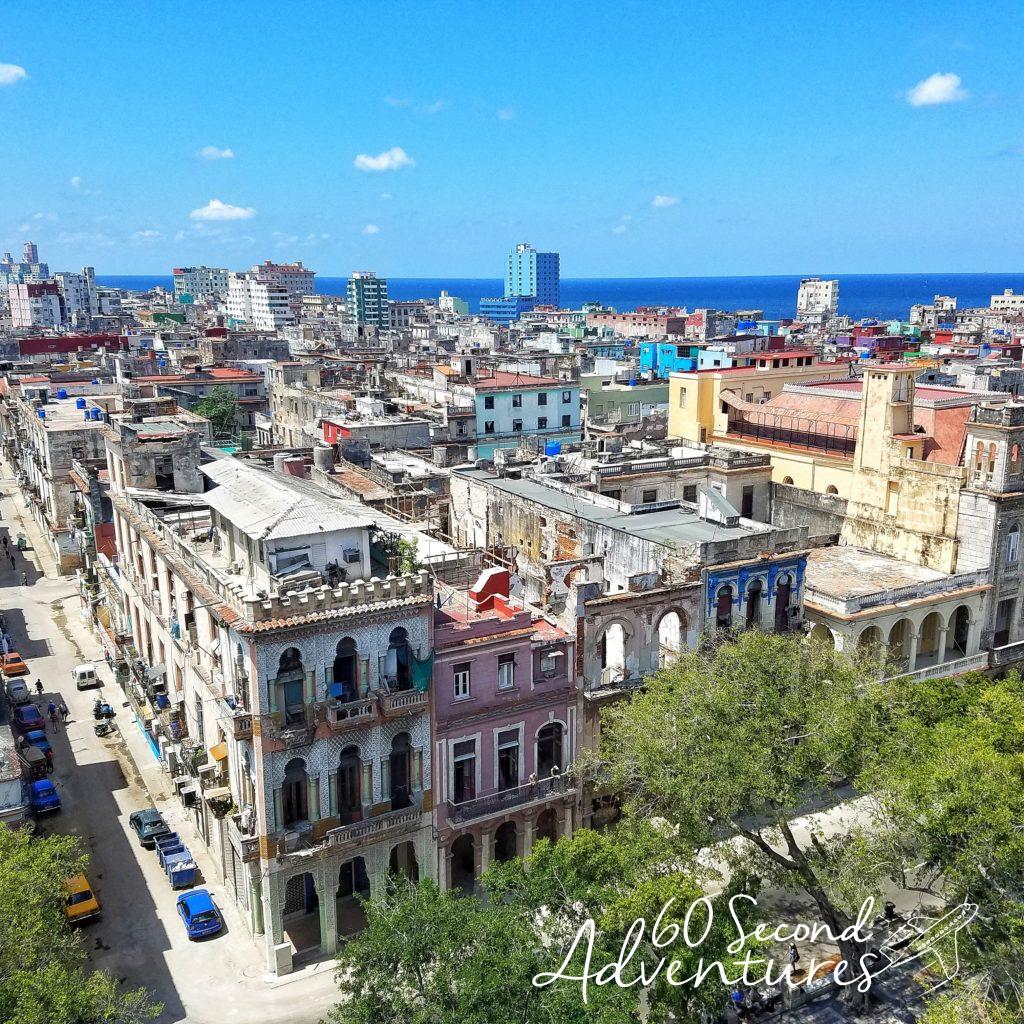
- 2pm and wander the main drag: stopped for photos, bought ice cream, chips, bottles of water, internet cards, stopped at Boutique Hotel Ambos Mundos rooftop again for a snack
- 3:45pm grabbed a classic car for $30CUC and had them give us a 1 hour tour, stopped on the Malecon for a photo with the high flying Cuban flag and his swanky pink candy colored classic car
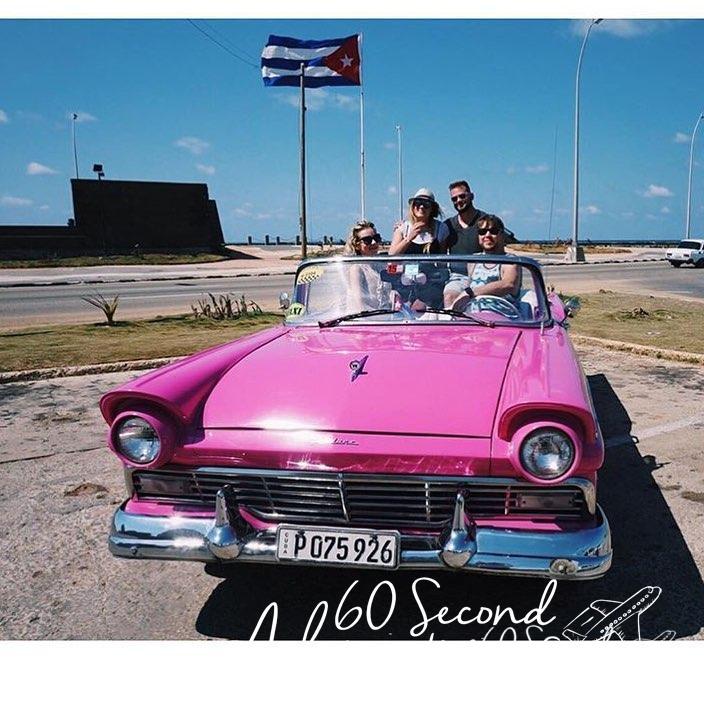
- 4:45pm walked the streets as part of a self guided walking tour through Heather’s Cuba app and checked out the nearby castle

- 7pm decided to check out the sunset at another swanky hotel (didn’t catch the name of the hotel but it’s between Parque central and Sloppy Joes) then grabbed dinner at their rooftop restaurant

- 8:30pm our friend got part of an earplug stuck in his ear so we tried to fish it out with tweezers, unsuccessfully
- 9:30 headed out and wander the streets more
- 10:30pm headed to one of the main squares (Plaza Vieja) where we grabbed drinks and listened to a band
- 11:30pm headed home
- Friday
- 11am grabbed breakfast/lunch at the Parque central and hopped on the internet
- Noon swung by the Airbnb to drop our stuff off and chilled for a bit
- 3pm head to the large merchant center where we walked around looking at art and trinkets, and bought souviners
- 5:30pm grab lunch at La Victorla in one of the main squares for Dave’s birthday lunch!
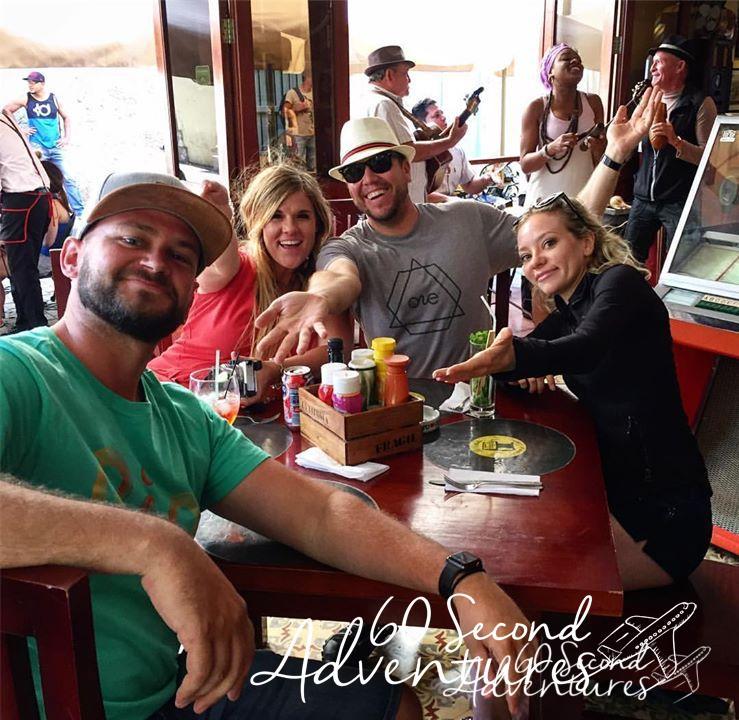
- 6:30pm headed back to toward the Airbnb stopping along the way for photos
- 8pm stopped in Parque Central for a bathroom break and got conned into buy more fake Cuban Cohiba cigars from their 5 star establishment’s nice fancy cigar cart set out in the lobby. Face-palm.

- 9pm arrive at our Airbnb and freshen up
- 10pm head to the club, Fabrica de Arte, via a $10CUC cab
- 11pm finally get into the club, cover was $2CUC per person
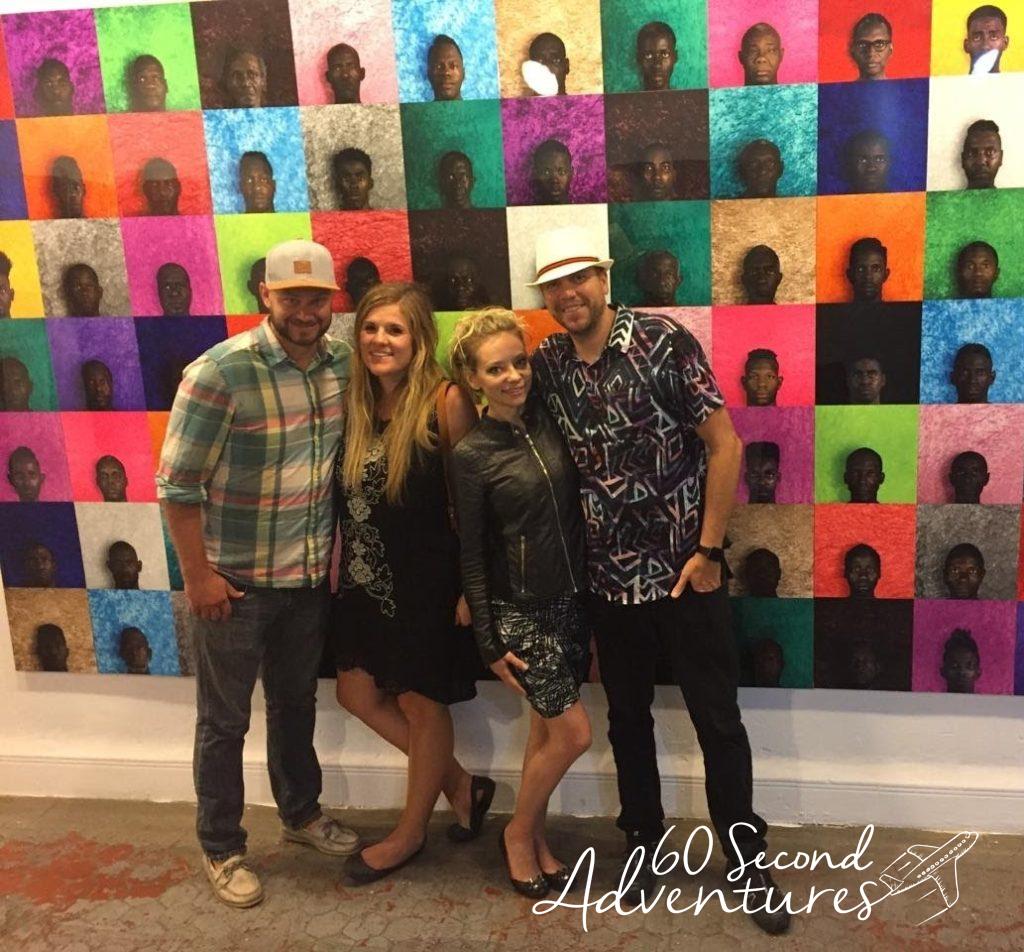
- 1:30am leave the club and get a $10CUC ride back to our Airbnb where we crash
- Saturday
- 10:30am wake up and pack
- 11am head out to the Parque Central Hotel to check internet and eat Breakfast
- 11:45am hire a classic car for $80CUC to take the 4 of us from Havana to Varadero
- 2:30pm arrive in Varadero and look for a place to stay (the cab driver helped us) but to no avail
- 3pm tell the cab driver to leave us as to not waste his time and start looking for a hotel to stay at (as none of the casas had vacancy)
- 3:30pm the hotel we were dropped off at found another hotel, Mar del Sur, that had vacancy for the night for us — we head there on food
- 4pm check in to the hotel and change, the grab sandwiches (all inclusive) and head to the beach

- 5:30pm Rodney and I headed out to try and find a scooter rental (to no avail)
- 6:30pm decide to hire a classic car to drive us around Varadero for the hour, we stop and take pics along the way and catch the sunset at the Varadero golf course restaurant that overlooks the ocean/beach and grabbed this pic
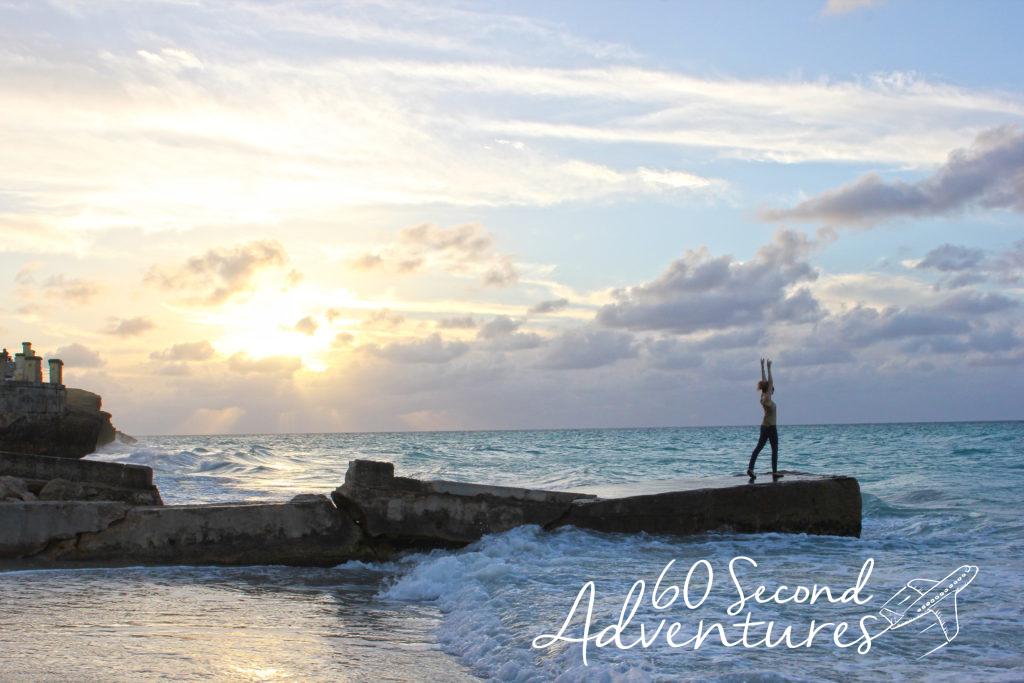
- 7:30pm arrive back at the hotel where we catch dinner (and meet Israelis that want to buy our Canon battery charger for their camera)
- 8:30pm take a nap
- 10:30pm head back out to wander the streets and check out the town, look for internet and try night photography
- Midnight, wander the beach and take some photos when we get back to the beach resort section with thatch umbrellas
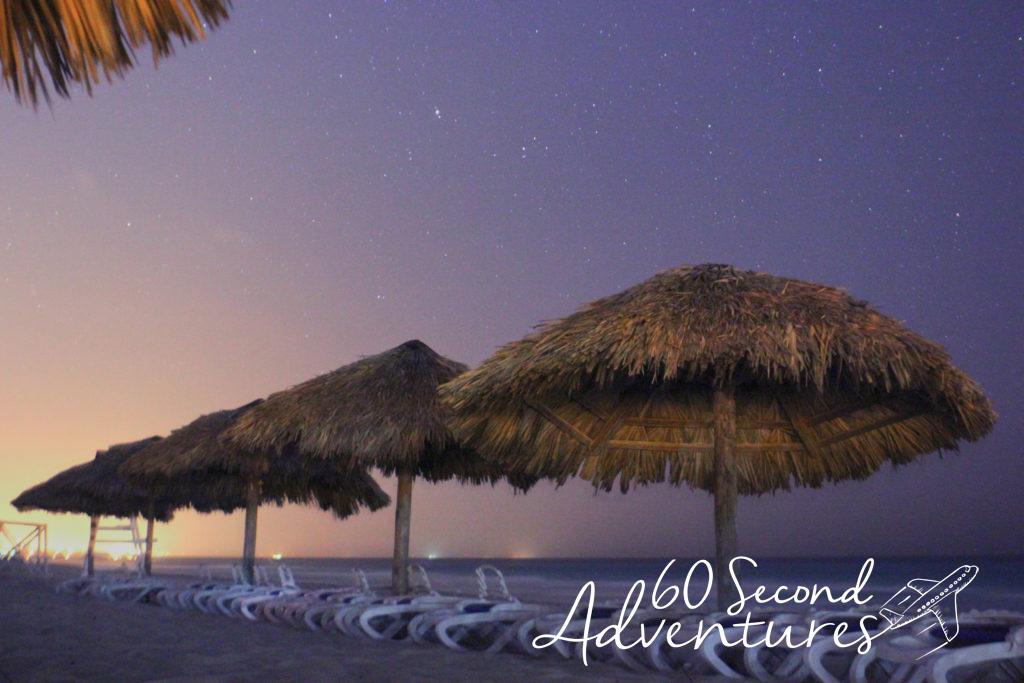
- 1:30pm head back in and head to bed
- Sunday
- 10am wake up for breakfast and sell the battery charger to the Isralies then pack
- 10:45am head to the airport
- 11:15 arrive at the Varadero airport
- 1pm fly out from Varader to FLL (via Southwest Airlines)
- 2:30pm arrive in FLL
- 5:30pm fly FLL to DEN
- 10:30pm fly DEN to SFO
- 1am (technically Monday morning) arrive in SFO

If We Had to Do It Again — Changes to the Schedule
If we had to do it again we would have done at least 8 nights/9 days and done it this way: fly into Varadero, spend two nights there and go scuba diving and caving (or at least on a boat ride if the weather doesn’t permit scuba diving) and spend some time on the beach, prebook and take the bus ($20) to Trinidad and spend two nights there where we would do more scuba diving and check out the local waterfalls, then take the bus to Vinales where we would go horseback riding, check out the tobacco plants, go caving, go hiking, then take a bus to Havana where we would spend 2 nights there then fly out. Ideally spending Friday and Saturday night in Havana when it’s hopping as to check out the local clubs, musicians, markets and typical Havana touristy things. Before you go to Fabrica de Arte Cubano we would suggest getting a dinner reservation (around 7pm) for Paladar la Esperanza nearby — very good food and great atmosphere.
If you had to stick to 4 nights/5 days, if you love scuba I would fly into Varadero and check out the beaches the day you fly in then scuba there the next day (as you need 24 hours after scuba diving before you can fly so ending your trip in Varadero doesn’t do you much good). If the weather is windy they send you on a 4 hour car ride to the other side of the island where you’ll scuba there — this leaves you enough time do to that the day after you fly in and still head to Havana the following day. After the second night, go to Havana and check out the city then fly out there. Varadero is a more relaxed experience than Havana but it was setup to cater to tourists so not extremely authentic feeling.
If you don’t care about scuba diving but only have 4 nights/5 days I would go in/out of Havana and head to Vinales rather than Varadero. I would structure it such that you get a weekend night in Havana if possible so you can check out one of the clubs. Again, I highly recommend Fabrica de Arte Cubano and going to Paladar la Esperanza near there for dinner beforehand. From there in Vinales I would go horseback riding, check out the cigar factories/plantations, check out the caves and go hiking. Vinales a more relaxed experience but still authentic.

Leave a Reply